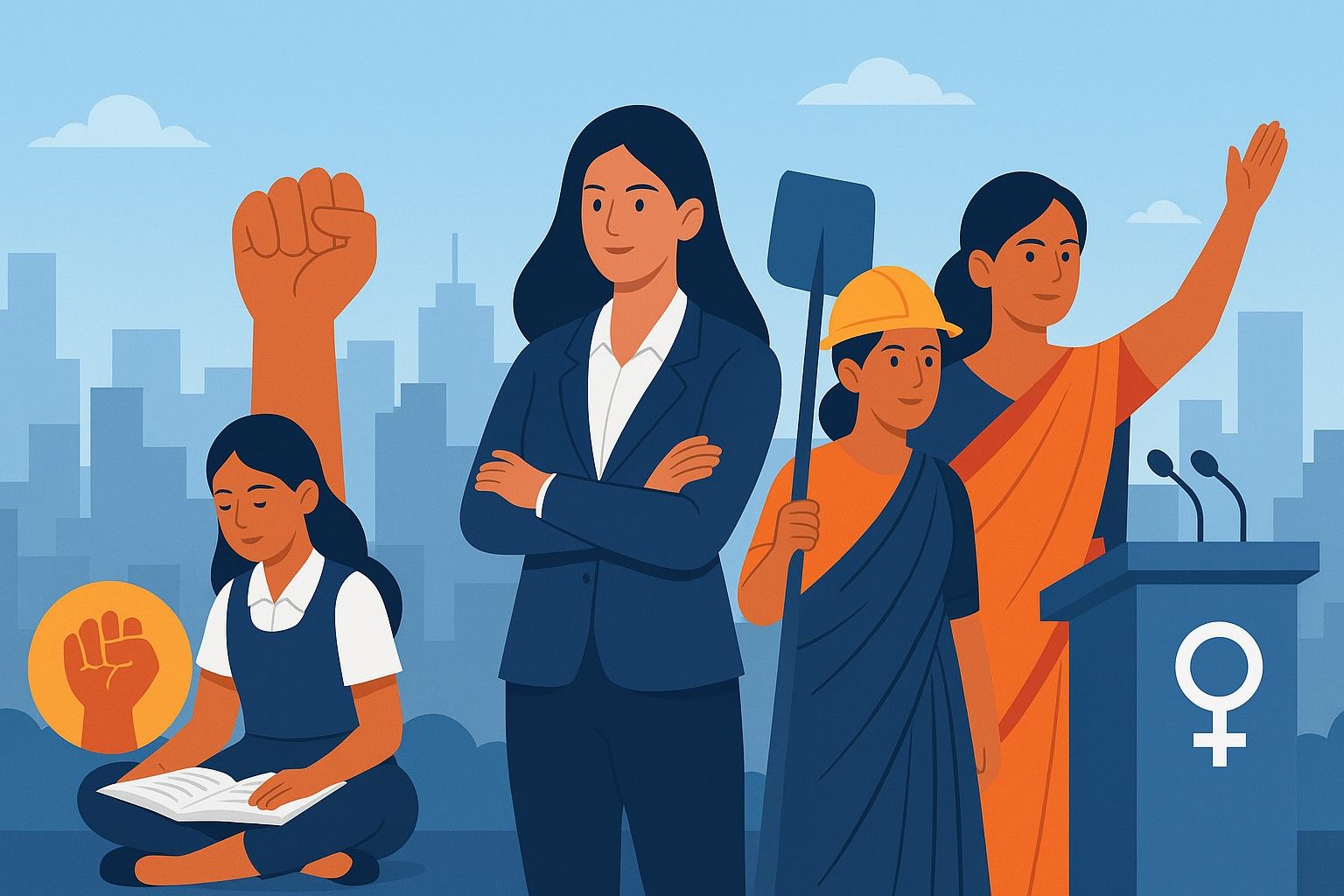India, the world’s most populous nation as of 2023, is a country of contradictions—technologically advanced yet socially constrained, democratic in structure yet patriarchal in practice. One of its most persistent and deep-rooted social issues is gender inequality. Despite constitutional guarantees of equality and decades of reform, women in India continue to face systemic discrimination across education, employment, health, political representation, and personal freedoms. This persistent gap between rights and reality not only marginalizes women but also holds back national progress. According to a McKinsey Global Institute report, India could add $770 billion to its GDP by 2025 simply by advancing gender parity. Yet, the path to true empowerment remains strewn with barriers—many invisible, others brutally overt.
The foundation of gender inequality in India is laid before birth. The 2011 Census revealed a child sex ratio of 919 girls to 1,000 boys, a glaring indicator of the cultural preference for sons. In states like Haryana and Punjab, this ratio has dipped even lower in the past, due to sex-selective abortions, a practice facilitated by illegal prenatal sex determination. Though the Pre-Conception and Pre-Natal Diagnostic Techniques (PCPNDT) Act of 1994 aims to curb this, enforcement remains weak. Girls, if born, often face neglect in nutrition, healthcare, and education, reinforcing a cycle of disadvantage.
Education, a key instrument for empowerment, shows a mixed picture. India’s overall female literacy rate stands at 70.3% (NFHS-5, 2019–21), compared to 84.7% for males, revealing a gap that widens in rural and marginalized communities. Dropout rates for girls spike during adolescence due to lack of sanitary facilities, early marriage, and household responsibilities. As per UDISE+ (2021-22), the secondary school dropout rate for girls is around 17.7%, compared to 13% for boys. While schemes like Beti Bachao, Beti Padhao have brought visibility to the issue, their effectiveness is often questioned due to poor fund utilization—only 25% of the allocated budget was spent on actual education initiatives between 2016 and 2019.
Employment data paints an equally grim picture. India’s female labor force participation rate (FLFPR) stood at 37% in 2023 (World Bank), far below the global average of around 50% and significantly behind China (61%). Rural participation is higher due to agricultural labor, but much of it is informal and unrecognized. Urban women face barriers like lack of childcare, unsafe public spaces, and workplace harassment. The gender wage gap remains persistent, with women earning 19% less than men for the same work (Monster Salary Index, 2019). Additionally, only 20% of India’s micro, small, and medium enterprises (MSMEs) are women-led, largely due to difficulties in accessing credit and capital.
Violence against women is another critical aspect of inequality. The National Crime Records Bureau (NCRB) reported 428,278 cases of crimes against women in 2021, a 15% increase from the previous year. These include domestic violence, dowry deaths, acid attacks, sexual harassment, and rape. Despite the introduction of stringent laws like the Criminal Law (Amendment) Act 2013 and the POSH Act 2013, implementation remains patchy. Courts are overloaded, investigations are delayed, and victims often face societal stigma and institutional apathy. In rural India, khap panchayats and social pressures frequently silence victims of honor crimes and domestic abuse.
Health indicators further highlight the gender disparity. According to NFHS-5, 53% of Indian women aged 15-49 are anemic, compared to 23% of men. Early marriage remains a major health risk—23% of Indian women are married before the age of 18, often resulting in early pregnancies, high maternal mortality rates, and school dropouts. Access to sexual and reproductive health is limited by taboos, lack of services, and poor awareness. Even something as basic as menstrual hygiene is a struggle—only 64% of women use hygienic methods during menstruation, particularly due to affordability and stigma.
Political representation, a critical indicator of empowerment, remains dismal at the national level. As of the 2024 general elections, only 15% of Lok Sabha members are women, despite women forming nearly 49% of the population. The much-debated Women’s Reservation Bill, which proposes 33% reservation in Parliament and state legislatures, was passed in 2023 but will only come into effect after the next delimitation—likely not before 2029. However, at the grassroots level, women have made notable strides. Thanks to the 73rd Constitutional Amendment, over 1.4 million women now serve in Panchayati Raj institutions, often challenging patriarchal norms, albeit with varying degrees of autonomy.
Media and pop culture continue to reflect and reinforce patriarchal attitudes. While recent years have seen powerful portrayals of women in films like Pink, Thappad, and Gunjan Saxena, the broader landscape still glorifies male dominance and objectifies women. The digital age has created new platforms for women to raise their voices but has also exposed them to cyberbullying, doxxing, and online harassment. A 2022 Amnesty International study found that 1 in 3 women in India face online abuse, often with communal or caste-based overtones.
Yet, despite these daunting challenges, India is also witnessing an undercurrent of change. Movements like #MeToo, anti-dowry campaigns, and menstrual equity drives are gathering momentum. Organizations like SEWA (Self-Employed Women’s Association), Breakthrough, and Azad Foundation are empowering women through training, legal aid, and livelihood programs. More than 80 million women have joined Self-Help Groups (SHGs) under the DAY-NRLM scheme, fostering financial independence and solidarity. Digital literacy and mobile access are helping bridge the gender divide—over 54% of rural women now own a mobile phone compared to just 36% a few years ago.
The government has launched various schemes to support women: Ujjwala Yojana (providing clean cooking gas), MUDRA Yojana (microfinance for women entrepreneurs), POSHAN Abhiyan (nutrition for mothers and children), and One Stop Centers (support for violence survivors). These efforts are promising, but require stronger implementation, better inter-departmental coordination, and active community involvement to bring real change.
For India to realize its demographic dividend and global aspirations, it must invest in the empowerment of its women. This involves not just policy reform but a societal reset. Families must raise boys to respect equality and girls to embrace independence. Schools must challenge gender norms. Workplaces must ensure safety and inclusion. And perhaps most importantly, women must be given the autonomy to make their own choices—free from fear, shame, or coercion.
In conclusion, gender inequality is not just a women’s issue—it is a national crisis that affects economic development, social justice, and human rights. Women are not just beneficiaries of development; they are drivers of it. By breaking the chains of inequality, India does not just uplift its women—it uplifts itself. As the saying goes, “When you educate a man, you educate an individual. When you educate a woman, you educate a family—and a nation.” India’s journey toward gender equality is far from over, but it is a fight worth fighting—for the future of all.
– By Dr Beanish Khan
Department of Humanities and social sciences

